Error Code 103 On a Vista Alarm System
Related Products
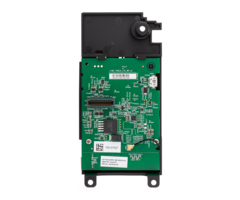
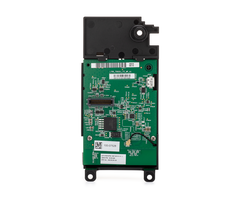
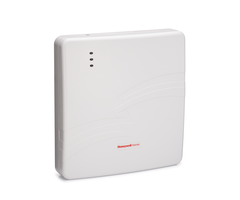


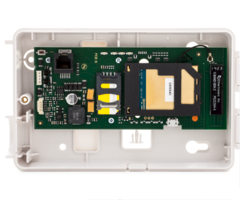
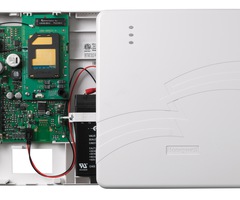
Related Categories
- Verizon LTE Cellular Communicators
- Internet Alarm Communicators
- Dual-Path Alarm Communicators
- Cellular Alarm Communicators
- AT&T LTE Cellular Communicators
Description
In this video, Joe explains the Check 103 Error Code that can appear on a Honeywell VISTA Alarm Panel. If you see a Check 103 Error Code, then it means there is a problem with the communicator for the panel. You will only get Check 103 on an Alphanumeric Keypad. On a Fixed-English Keypad you get bF.
If you get a Check 103 Error Message then you must correct the problem with your system's communicator and then acknowledge the problem with a double disarm. The trouble condition will not go away until you perform the double disarm. This is so that the system is absolutely sure that you are aware the problem occurred. A double disarm can be performed by entering the Master Code, plus 1. Then enter that same sequence, Master Code, plus 1, a second time.
Remember that you will only get the Check 103 Error Code on an Alphanumeric Keypad. On a Fixed English Keypad, the trouble condition bF is displayed instead. The bF condition stands for "backup failure", which makes sense, as the backup communication path is not working properly. You will only have a true backup communication path if you have a dual-path communicator set up with your VISTA System. In this case, the system uses IP as its primary path, and cellular as its backup path. Accordingly, if something is wrong with the cellular communicator, then a bF or Check 103 Error will occur.
There are many reasons why you might get a Check 103 Error or a bF Error. Some of the most common reasons are that the communicator has a loose tamper cover, the communicator has been shut off, or the cellular network associated with the communicator has been shut down. There are other possibilities, but those are just three common causes. If the associated cellular network has been shut down, then you will need to upgrade to a newer communicator. We recommend using an LTE communicator with your VISTA System so that it can stay actively monitored for many years to come.
http://alrm.gd/get-monitored
Transcript
Hi, DIYers, Joe from Alarm Grid. And today, we're going to talk about what is a check 103 on my VISTA alarm system. Before we get into that, though, depending on what kind of keypad you have installed on your VISTA system will change what this notification looks like. If you have a alphanumeric keypad like the 6160 right here with the full English display, that will show you the check 103. If you have a fixed English keypad like the 6150 over here, that's going to show you bF. It's not going to show you the check 103. bF stands for backup failure. In either case, though, it is the same error. What this is telling you is that there is an issue with the system's communicator depending on what that is. The check 103, it does have to do with an internet and/or cellular communicator. So you will have to have one of those installed on the system to see this issue. Now, there's a whole bunch of things that can happen with the system and its communicator. In a typical setup, you would have a panel like a VISTA-20P and then you have the communicator attached to it. For all intents and purposes, let's talk about the iGSMV4G. What that communicator is-- it's dual path. So at has cellular and it has internet in one box. Now, if you have your VISTA panel here, you would install your communicator somewhere over here. And then it connects back to the panel with a wire. Now, there's a whole bunch of things that can happen or go wrong in between the panel and the communicator with this setup. The check 103 is telling you that there is an issue and that there's something in that realm going wrong with the system. If you do have a fixed or an alphanumeric keypad like the 6160, you will get a four-digit code on there that will help you figure out better what the issue is, which is why the 6160s are much better to have than your fixed English keypad. On the FAQ that is associated with this video, you'll find a table with a legend that shows you the codes and what they mean. So you can use that as a quick guide to see what is actually going wrong with the system. Now, going down the list of things that could go wrong or give you this check 103 is that on the communicators, many of them have a tamper switch. So that if you open the cover of the communicator, it's going to tell the system that there is a tamper issue. This will show up as a check 103. There can also be an issue between the wiring of the communicator all the way back to the panel. The wire could be broken. Maybe one of the wires has landed in the wrong spot or something of the sort. This will also give you that issue. Another issue is that the battery backup in your communicator could be too low. This can also give you the check 103. A lot of these communicators have their own backup battery right inside of the unit that is separate from the panel. Another problem could be that the communicator wasn't registered. It wasn't registered properly. Let's say you have a dual-path communicator that has internet and cellular. If that cellular portion isn't registered with AlarmNet on a Honeywell system, that check 103 is going to pop up until your alarm or until your security company finishes registering the system. Another issue is that the panel itself could have a communication path that is enabled, but it doesn't have the proper communicator to use that path. You're also going to see this check 103. So there are a whole bunch of different issues that can pop up from the check 103. Do you have that 6160 keypad? That's going to give you that four digit code, which will make your troubleshooting go much faster. Because it's going to tell you more information about what's going on. If you do have a fixed English keypad, though, and you're only seeing that bF, you'll be able to figure out what's going on with the communicator. You just have to go down the troubleshooting steps and eliminate all the different things that could be going wrong with the system. Before you jump in to any of this, though, you'll want to do a master code disarm and then a master code disarm before you start anything. The double disarm, that'll clear any trouble code in the system that's pending. This is important because if you have an internet communicator, internet service as you may well know can go in and out at random times. If your system is only working on internet and the internet drops down, that check 103 can pop up telling you that there's a communication issue. Until you clear it though, it's going to linger on the keypad making you acknowledge that there was an issue at some point. Without clearing the keypad twice, though, you may not actually realize that the issue could have been resolved, and it's just a pending message. So that's the first thing that you want to do just to make sure that the system does actually have the issue going on. So again, there are a whole bunch of different reasons why you could get the check 103. If you do have any questions about this-- how do I figure this out, or how do I troubleshoot it-- feel free to give us a call at 888-818-7728. Head to our website, www.alarmgrid.com or send us an email to support@alarmgrid.com. If you did enjoy the video, feel free to subscribe. And if you want to be notified if we post future videos, hit the notification button below, and we'll send you an update when we do so. Thanks for watching and have a great day.
- Uploaded
